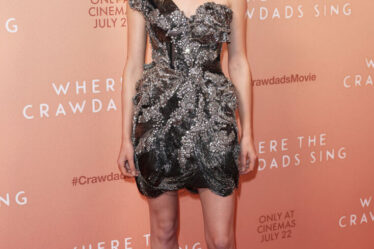
Founders usually want their beauty brands to be positioned in one of two ways — “affordable” or “luxury.”
It’s cool to be accessible but still look and feel expensive. The Ordinary and Versed use this as their differentiator; $7 lactic acid serum and $17.99 eye balm feel more elevated than their prices suggest. The opposite extreme is enticing, too. Augustinus Bader, known for proprietary ingredients and a $280 moisturiser, has in the space of just four years secured its luxury positioning alongside La Mer and La Prairie.
Consumers have a high low mentality, similar to fashion, forcing beauty lines to pick a path. The in-between is less desirable.
Many are resistant to identify as “prestige,” the industry term for higher-priced (but not quite La Mer expensive) products traditionally sold at Sephora or a department store, or really anywhere but the drugstore.
Most prestige lines go to great lengths to convince shoppers they are in fact “luxury.” But the reality is that hardly any of them are.
I’ve been thinking a lot about what makes a brand truly luxury, versus a company that just sells $120 serum or $42 lipstick.
Yes, it’s price, but it’s also so much more. Luxury beauty is determined by perception and packaging, both highly subjective concepts with no clear threshold or definition. You know it when you see it.
With skin care, a bottle of moisturiser in the most premium packaging passes as luxury, especially when priced at over $200. The high prices are justified by specific ingredients, a patented new molecule or scientific “innovation,” making any number of claims that consistent use will yield. You can’t put a price on the “appearance of reduced wrinkles,” and tighter, brighter skin.
It’s harder for makeup, where the marketing is not typically so rooted in innovation or science, to make that distinction. There’s not that much of a difference between most colour products within the prestige category. Sometimes, the new eyeshadow palettes from a celebrity founded brand are comparable to drugstore brands.
Luxury signifiers come down to packaging, or hybrid formulas, such as foundations that lean heavily into skin care ingredients. Complexion products with skin care attributes is a category people are willing to splurge on; in eye or lip, a higher priced shadow or lipstick may have more intense pigment or richer texture, but in the hands of anyone but a makeup artist, isn’t that much different than a cheaper option.
Hermés, which makes $72 lipsticks that look like objets intended primarily for display in one’s bathroom, has a 185-year head start in establishing itself as one of the world’s most luxurious brands. Chanel, which plays in both skin and colour, is similar.
When I was in high school, I had to have a Chanel eyeshadow palette, and a Dior lipstick, which came in a heavy silver compact shaped like a saddle bag. It felt like luxury.
But for new lines, especially those that can’t borrow credibility from an established brand, achieving luxury standing is nearly impossible.
A few exceptions are Gucci Westman’s Westman Atelier, which launched in 2018, the same year as Augustinus Bader, and Pat McGrath’s Pat McGrath Labs, which came out in 2015. Westman’s makeup is to beauty what The Row is to fashion. Magnetic topped tubes and compacts, although minimalist, are designed with quality and extreme attention to detail, from mixed metal accents to engravings inside caps.
Most will have to settle for being merely prestige.
To read more from BoF’s Beauty Editor-at-Large Rachel Strugatz, sign up for our weekly briefing on The Business of Beauty, delivered to your inbox every Wednesday.



